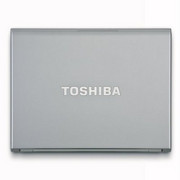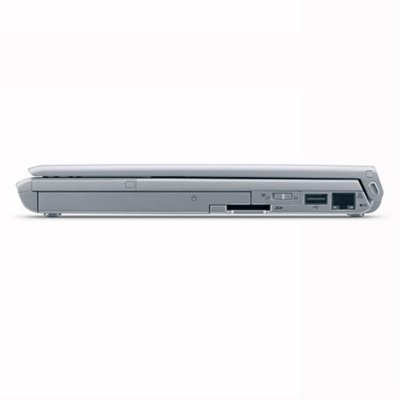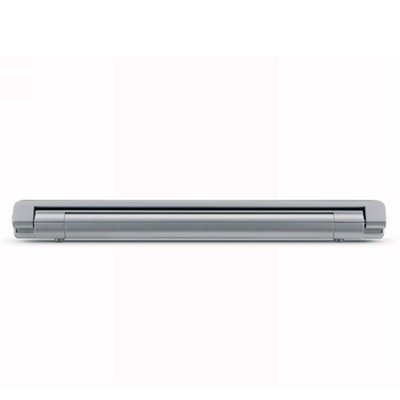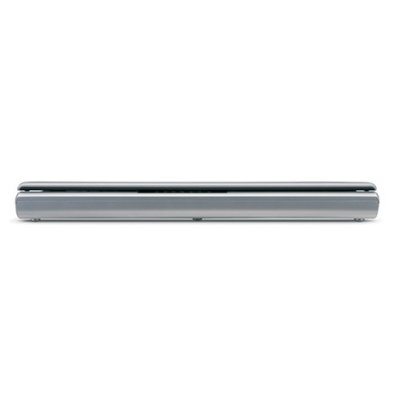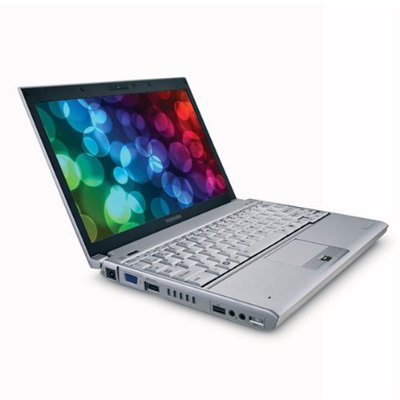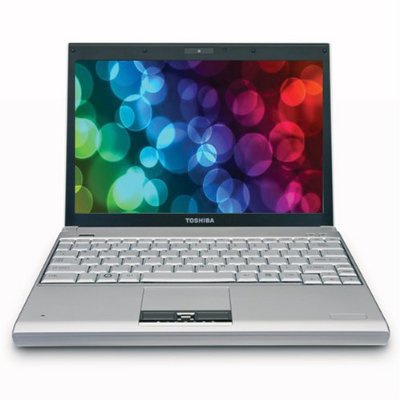Toshiba Portege A605
Specifiche tecniche
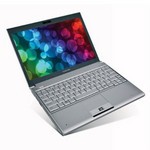
Price comparison
Media dei 1 punteggi (dalle 2 recensioni)
recensioni per Toshiba Portege A605
Sorgente: Maximum PC
 EN→IT Archive.org version
EN→IT Archive.org versionNeither the R600 nor the A605 are the best-performing ultraportables we’ve tested. That honor goes to HP’s 2530p and Lenovo’s X200s (both also reviewed in August), which featured 1.86GHz Core 2 Duo procs. The R600 overcame this deficit with its near-weightlessness. The less-expensive A605 doesn’t have this special quality. It does, however, have respectable performance, a strong feature set, and a damn good price.
Singola recensione, disponibile online, Medio, Data: 10/16/2009
Valutazione: Punteggio totale: 80%
Sorgente: Notebookreview.com
 EN→IT Archive.org version
EN→IT Archive.org versionThe Toshiba Portege A605 offers good looks and a small form factor, but compromises build quality to achieve its very low weight. The palm rest, keyboard, and screen all exhibit a good amount of flex, which doesn’t bode well for thoughts of durability. Looking past the flexible chassis, the notebook does offer a built-in optical drive, and still keeps the overall weight to just above 3lbs. For a business traveler who only cares about that, this notebook falls right in the weight range of most netbooks. With the current list price of $1,399 it is priced against the Lenovo ThinkPad X200 or about double the price of an HP Pavilion dv2. Overall I think the Portege A605 offers a lot potential for a customer interested in a good looking business notebook, but it has a few areas that could see some improvement.
Singola recensione, disponibile online, Lungo, Data: 05/11/2009
Valutazione: mobilità: 80% emissioni: 80%
Commenti
Intel Graphics Media Accelerator (GMA) 4500MHD: Scheda grafica intregrata basata sul chipset GM45 (Montevina). Più performante rispetto alla vecchia GMA X3100 grazie ha due shader in più ed ad un clock più elevato. Rimane, comunque, non consigliata per i giocatori più incalliti. Il processore video integrato è capace di codificare video HD (AVC/VC-2/MPEG2). Ad esempio permette la riproduzione di video HD compatibile con i requisiti del logo Blu-Ray, con il supporto nativo per unità Blu-Ray.
Soltanto i giochi datasi possono essere giocati in modo fluido con questi chips grafici (se non richiedono troppe prestazioni). I cores con memoria grafica condivisa in questa categoria hanno il vantaggio delle minori emissioni di calore e della maggiore autonomia della batteria. Per ufficio, internet, image processing, e video editing queste schede grafiche sono utilizzabili senza particolari problematiche.
>> Ulteriori informazioni le potete trovare nel nostroConfronto delle schede grafiche e nella nostra Lista dei Benchmark.
Intel Core 2 Duo: Questo è il successore del Core Duo e del Core Solo con una pipeline più lunga ed il 5-20% di velocità in più senza avere maggiore consumo di energia. Come aggiunta al design del Core Duo esiste un quarto decoder, una unità amplificata SSE ed una unità logica aritmetica (ALU) addizionale. Il Core 2 Duo per portatili è identico al processore per desktop Core 2 Duo ma il processore per portatili lavora con un voltaggio inferiore (0.95 a 1188 Volt) ed un Frontside bus clock inferiore (1066 vs 667 MHz). Le prestazioni di portatili con clock equivalenti sono inferiori del 20-25% rispetto ai PCs Desktop a causa del Frontside bus clock inferiore e agli hard disks più lenti.
SU9400: Processore a risparmio energetico a basso voltaggio basato sul core Penryn 3M che sfrutta tutte le funzioni Penryn come la virtualizzazione e la Trusted Execution.
>>Ulteriori informazioni le potete trovare nel nostroConfronto dei processori per portatili.




